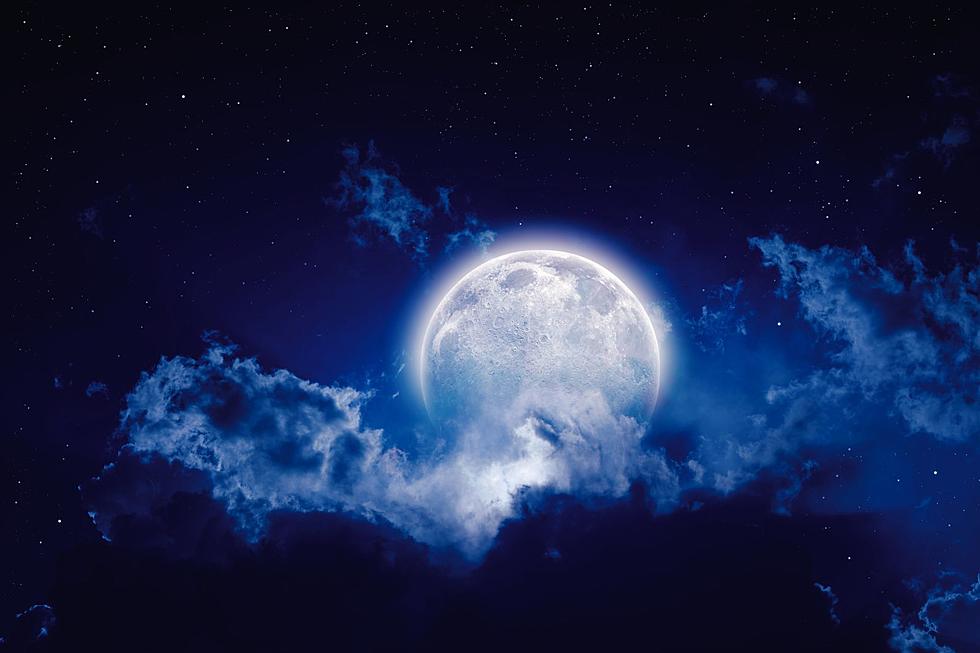
The ONLY Blue Moon of 2023 Rises in Wyoming Skies Next Week
August has been an exceptional month for stargazers. The Perseid Showers sent shooting stars across the skies, and the first of August's supermoons illuminated the horizon on August 1. We're in for one last lunar treat for the month, as a rare second supermoon will grace Wyoming skies next week.

It's unusual for two full moons to appear in a single month - the uncommon event is the source of the phrase: "once in a blue moon." Any second full moon in a month is labeled a "Blue Moon," but August of 2023 is twice as extraordinary because both full moons are classified as "supermoons."
Once in a Super Blue Moon...
Though Blue Moons are uncommon lunar events (typically occurring every 30 months), a Super Blue Moon is still rarer. And TWO Supermoons in a month? That's the rarest of them all. NASA reports that Super Blue Moons only happen about every 10 to 20 years - the next won't appear in the heavens until 2037! So, you won't want to miss the moon rising on August 30 next week.
Aside from being an ultra-rare event, August's Super Blue Moon is also the brightest full moon of the year. And, it won't be alone in the night sky. The planet Saturn is also set to make an appearance with the Super Blue Moon. According to Space.com, "Saturn will be in the constellation Aquarius, above and to the right of the moon." (Space.com)
Best Time to View the August 2023 Super Blue Moon
If you want to catch the Super Bluemoon at its best, head outside at sunset and look East to the horizon. The moon will slowly make its ascent from there and appear at its largest when close to the horizon line. Here's when sunset arrives in Wyoming towns and cities:
- Torrington: 7:34 PM
- Cheyenne: 7:35 PM
- Newcastle: 7:36 PM
- Laramie: 7:39 PM
- Gillette: 7:42 PM
- Casper: 7:43 PM
- Riverton: 7:52 PM
- Rock Springs: 7:53 PM
- Cody: 7:57 PM
- Evanston: 8:00 PM
- Jackson: 8:02 PM
Fun Facts About the Blue Moon
Where Does the Term 'Blue Moon' Come From?
The Old Farmer's Almanac explains that though most full moon names come from Native American Indian folklore, the term "Blue Moon" only came about by accident. "It was a result of a much earlier mistake printed in a 1946 issue of Sky & Telescope magazine, and since then, the term has gone viral in the media," explains the publication. The term began to take root when used in a radio broadcast called "StarDate" on January 31, 1980. (Library of Congress)
There Are Two Kinds of Blue Moons!
There are two kinds of Blue Moons: calendrical and seasonal. Calendrical Blue Moons are the second full moon to happen in a month. Seasonal Blue Moons occur when more than three full moons happen in one season, which "typically has three full moons occurring within it." (Old Farmer's Almanac)
Can the Moon Actually Look Blue?
It's a common misconception that Blue Moons earned their title due to the moon appearing blue during the lunar event. Typically, you won't actually see a moon tinted blue in the night sky.
However, there are exceptions. The Library of Congress notes that when the volcano Krakoa erupted, "dust was sent into the atmosphere, it made for some very unusual skies, including blue moons!"
